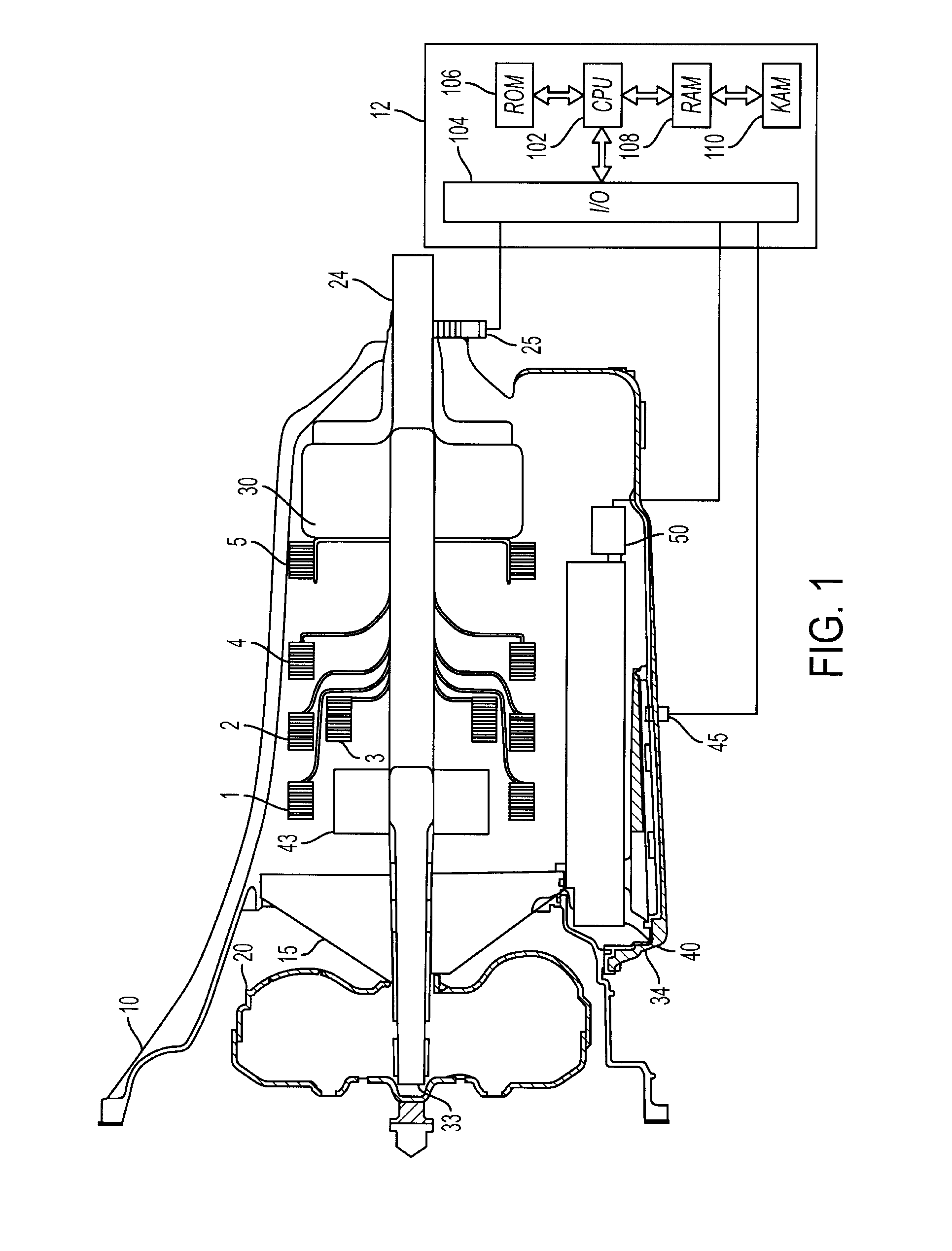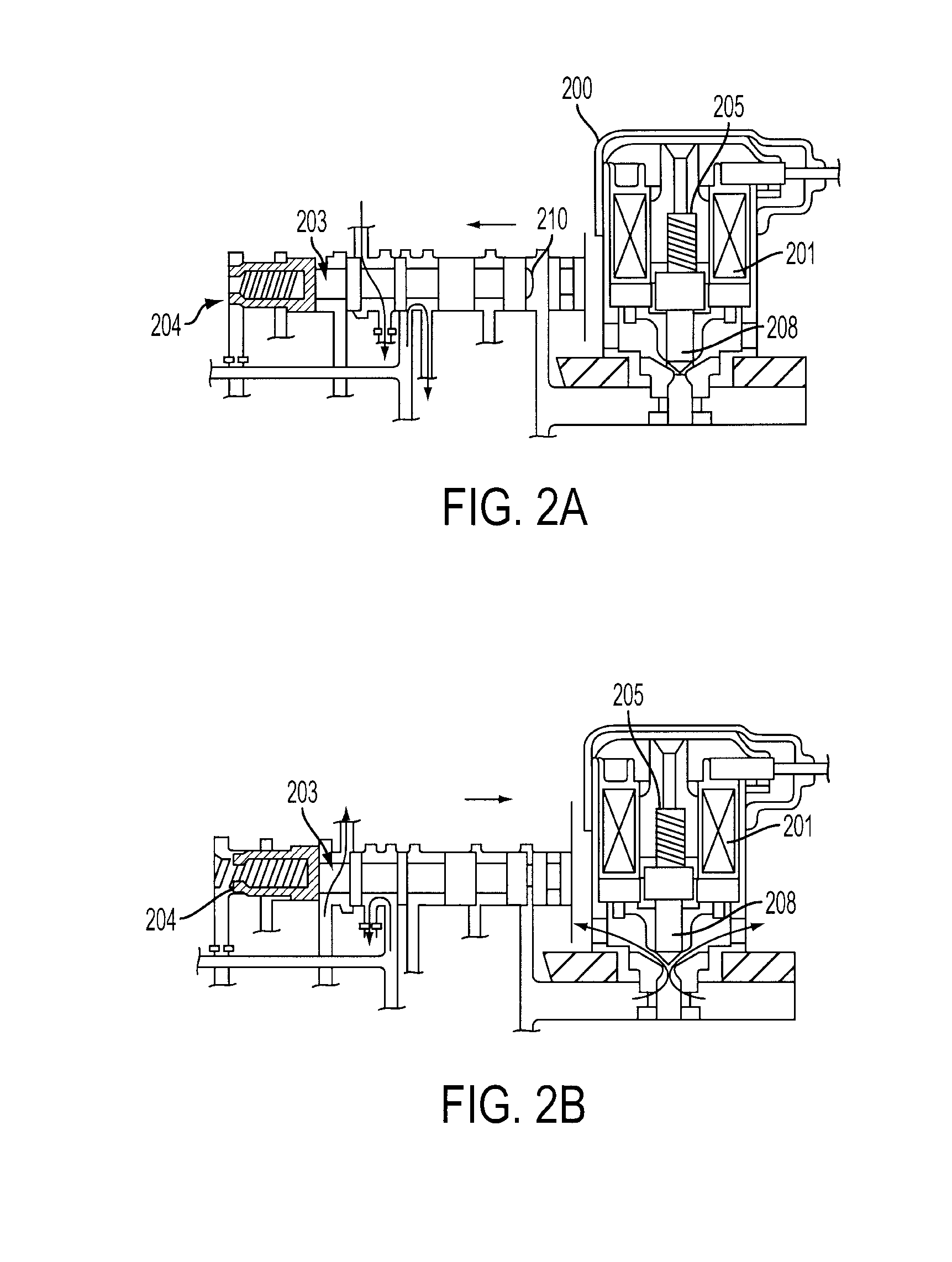Operation of electrically controlled transmissions at lower temperatures
a technology of electrically controlled transmission and low temperature, which is applied in the direction of gearing control, gearing element, belt/chain/gearing, etc., can solve the problems of shifting feel deformation, increased friction loss in electrically operable mechanically actuated valves, and increased electrical energy requirements, so as to improve fuel economy, reduce torque disturbance, and improve the performance of a transmission coupled to an internal combustion engine
- Summary
- Abstract
- Description
- Claims
- Application Information
AI Technical Summary
Benefits of technology
Problems solved by technology
Method used
Image
Examples
Embodiment Construction
[0013]Referring to FIG. 1, a transmission 10, for managing power flow from an internal combustion engine to drive wheels of a vehicle is shown. Transmission operation is controlled by electronic controller 12. Transmission 10 includes torque converter 20 coupled to input shaft 33. Pump 15 pulls transmission fluid from pan 34 and is driven by input shaft 33 supplying pressurized fluid to torque converter 20 and to clutches 1-5 via valve body 40. Engine torque can be transferred from torque converter 20; through input shaft 33; through input gear set 43; through selected clutches 1-5; through output gear set 30; and to the output shaft 24. Spool valves (not shown) in the valve body are controlled by electrically operable mechanical valve 50, and by similar valves (not shown) to control transmission fluid pressure, control torque converter lock-up, and to apply clutches 1-5.
[0014]Controller 12 is shown in FIG. 1 as a conventional microcomputer including: microprocessor unit 102, input / ...
PUM
 Login to View More
Login to View More Abstract
Description
Claims
Application Information
 Login to View More
Login to View More - R&D
- Intellectual Property
- Life Sciences
- Materials
- Tech Scout
- Unparalleled Data Quality
- Higher Quality Content
- 60% Fewer Hallucinations
Browse by: Latest US Patents, China's latest patents, Technical Efficacy Thesaurus, Application Domain, Technology Topic, Popular Technical Reports.
© 2025 PatSnap. All rights reserved.Legal|Privacy policy|Modern Slavery Act Transparency Statement|Sitemap|About US| Contact US: help@patsnap.com



